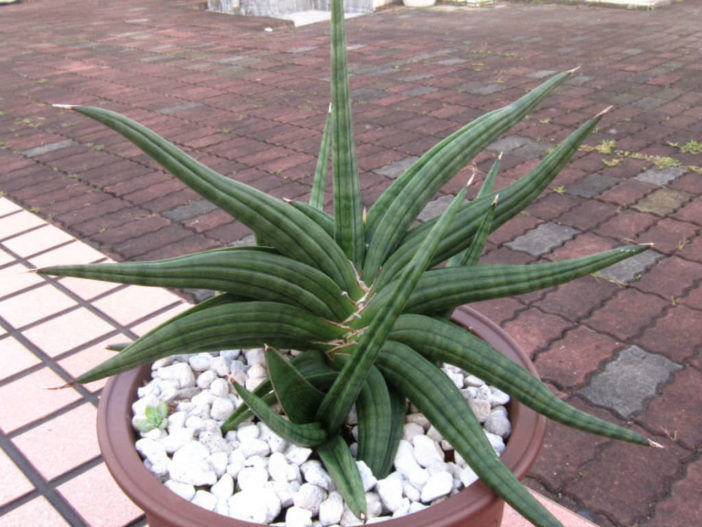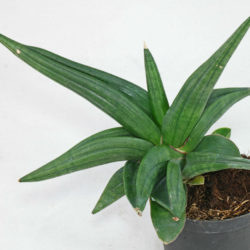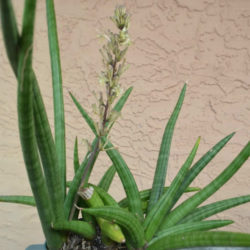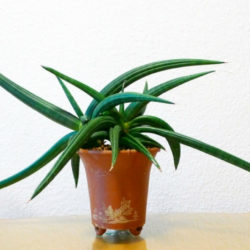Scientific Name
Sansevieria patens N.E.Br.
Common Name(s)
Snake Plant
Synonym(s)
Acyntha patens, Sansevieria 'Ed Eby'
Scientific Classification
Family: Asparagaceae
Subfamily: Crassuloideae
Genus: Sansevieria
Description
Sansevieria patens is an attractive succulent that forms large rosettes composed of short, arching, cylindrical, longitudinally grooved leaves that spread in various orientations. It has subterranean branching rhizomes up to 1 inch (2.5 cm) in diameter. Leaves are up to 3 feet (90 cm) long and 1.8 inches (45 cm) thick. They are somewhat indistinctly marked with dark green and paler green transverse bands, becoming bluish-green with age and longitudinally marked with numerous blackish-green lines. Several of them continue to the apex.
The flowers are grey-white and appear in clusters.

Hardiness
USDA hardiness zones 10b to 11b: from 35 °F (+1.7 °C) to 50 °F (+10 °C).
How to Grow and Care
Place Sansevierias in moderately bright or filtered light. Good locations include a spot in front of a north-facing window or front of a bright, sunny window covered by a sheer curtain. Although the plant tolerates low light, bright light brings out the colors in the leaves. However, intense light may cause the edges of the leaves to turn yellow.
Allow the soil to dry completely before watering and then water deeply until water drips through the drainage hole. Allow the pot to drain, and then discard the water that remains in the saucer. Never allow the soil to become soggy, and never let the pot stand in water. Water sparingly throughout the winter. Like most succulent plants that store water in their leaves, Sansevieria rots quickly in excessively wet soil.
Place Sansevieria in average room temperatures. Protect the plant from drafts and cold temperatures as it is damaged below 50 °F (10 °C).
Feed the plant once every three weeks throughout the summer. Use a general-purpose fertilizer for houseplants diluted to one-half the strength suggested on the container. Sansevieria is a light feeder, and too much fertilizer makes the leaves fall over.
See more at How to Grow and Care for Sansevieria.
Origin
N. E. Brown described this species in 1915 with a comment, "Origin unknown, but probably British East Africa (Kenya)."
Forms
Links
- Back to genus Sansevieria
- Succupedia: Browse succulents by Scientific Name, Common Name, Genus, Family, USDA Hardiness Zone, Origin, or cacti by Genus


